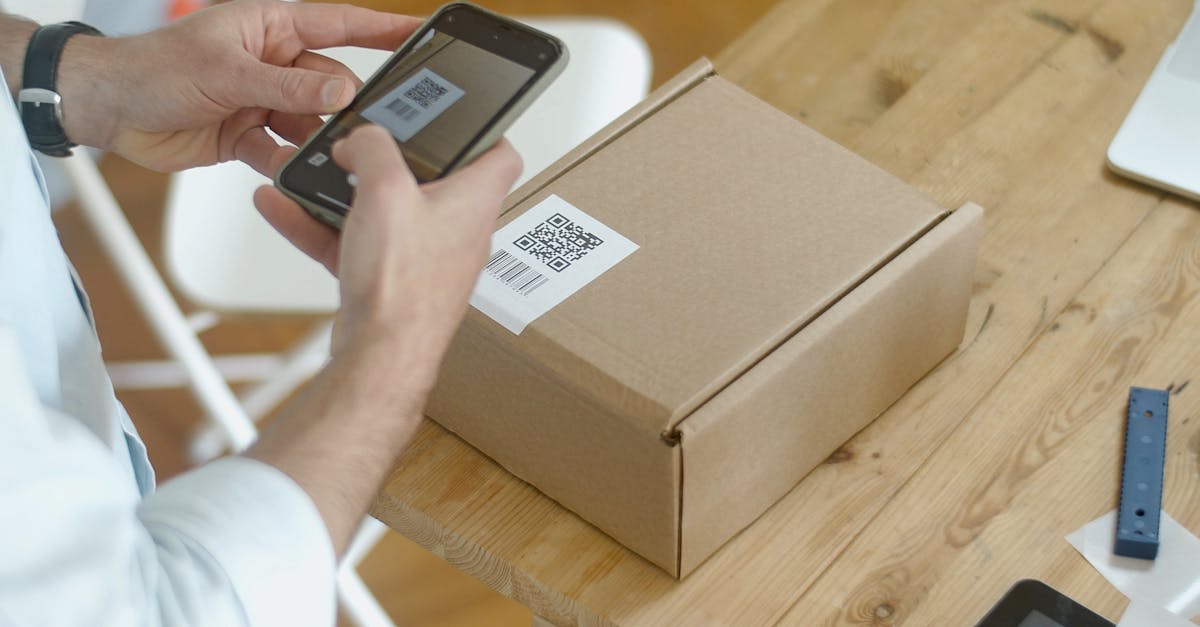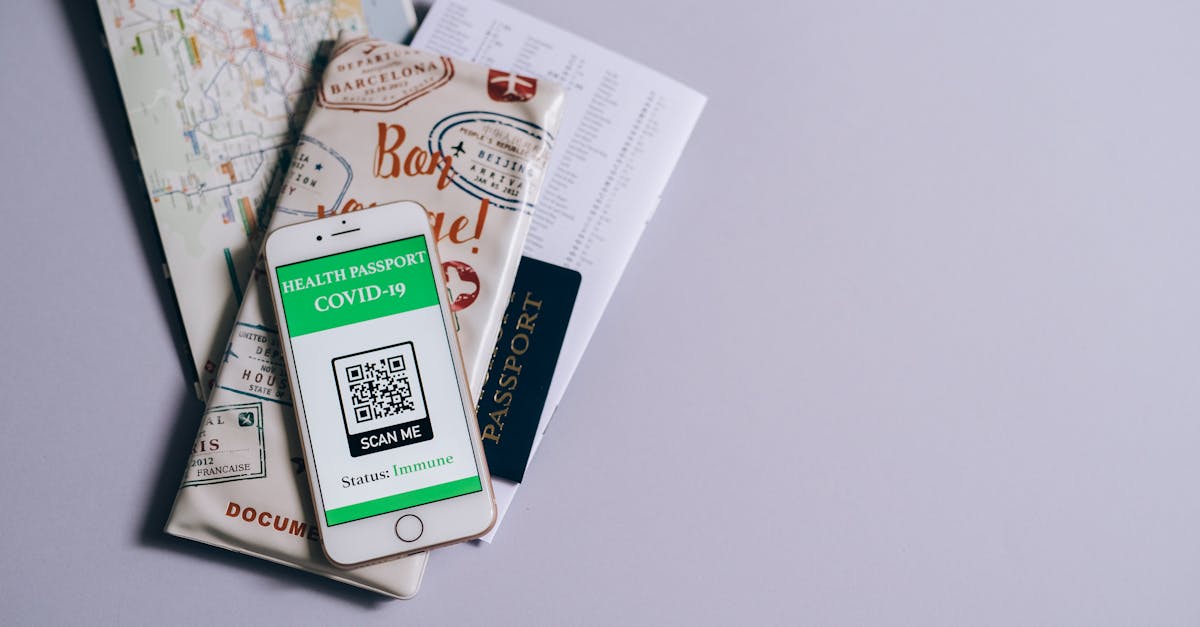Discover how the QR code, this little marvel of technology, can transform the shipping industry. Immersed in the heart of the digital age, it promises effective shipping tracking, increased efficiency and unparalleled supply chain optimization. Its potential is immense – ready to deploy it?
Understanding How QR Codes Work in Shipping

What is a QR code and how does it work?
A QR code, or Quick Response code, is a type of two-dimensional barcode that can be quickly scanned with a smartphone to access additional information. It is generally used to store URLs or text data that can be read immediately by mobile devices.
What makes the QR code special is its two-dimensional aspect. While a standard barcode only contains information horizontally, a QR code also contains it vertically. This allows it to store a considerably larger amount of information. And most importantly, it means that information can be accessed much more quickly.
The role of the QR code in shipment tracking
In the field of logistics, the use of QR code contributes to more efficient and transparent shipping management. QR codes are used to track products throughout the delivery chain. They can provide instant access to essential information such as:
– The name of the product
– The weight and dimensions of the package
– The final destination
– Estimated time of arrival
This essential information can be read quickly and easily by handling personnel, drivers and even customers. Which makes the delivery process more transparent.
Why integrate QR codes into shipments?
Adopting QR codes in shipment tracking offers several benefits that can significantly improve the efficiency of any logistics operation.
– Time saving: The QR code provides instant access to information. No more manually entering tracking numbers or going through complicated systems.
– Precision: With the QR code, the risk of errors is practically eliminated. Each QR code is unique, eliminating confusion that can arise with similar numbers. Additionally, the information contained in the QR code is less likely to be damaged or erased.
– Real-time tracking: Tracking data can be updated instantly, enabling real-time supply chain visibility and management.
In conclusion, integrating QR codes into shipment tracking can greatly contribute to efficiency and accuracy when processing shipments. For users like Jeanne, this means accurate tracking and faster deliveries, improving the overall shopping experience.
The use of QR codes in the logistics industry

Impact of QR codes in the transformation of industrial logistics
Industrial logistics is a sector where efficiency and precision are essential. Here, each error can lead to supply delays and have cascading consequences throughout the entire production chain. This is where the QR codes come into play, bringing a silent but profound revolution.
The adoption of QR codes in logistics: a silent revolution
QR codes, or Quick Response Codes, were created in the 1990s as a way to improve the speed and efficiency of product tracking in the Japanese automotive industry. Since then, their use has spread across many sectors, including industrial logistics. QR codes have made inventory tracking and shipping management faster and more accurate. Costs have been reduced, efficiency increased and errors have been virtually eliminated.
How do QR codes improve shipment tracking?
Each QR code is unique and can store a large amount of information. These codes can be easily scanned using a smartphone or barcode scanner, providing instant access to the information stored inside. Here is how this technology benefits industrial logistics:
– Real-time tracking : Thanks to QR codes, companies can easily track the movement of each product or component through the supply chain in real time.
– Reduced errors : The possibility of errors in tracking shipments is significantly reduced. Each product is clearly identified by its unique QR code.
– Time saving : Verification and inventory processes are accelerated because QR codes can be scanned quickly and easily.
– Automating : QR codes enable great automation of logistics processes, leading to cost reduction and improved efficiency.
QR codes and the future of industrial logistics
The future of industrial logistics will undoubtedly be marked by technology. With the rise of the Internet of Things and robotics, QR codes, thanks to their simplicity and convenience, will play a key role in streamlining logistics operations.
In summary, the impact of QR codes on industrial logistics is undeniable. These small black and white squares bring great value to every stage of the supply chain, providing an ideal solution to support the digital transformation of industrial logistics.
Possibilities for optimizing tracking using QR codes

QR codes: the path to optimized tracking
Since their appearance, the QR codes have continued to gain popularity, in particular thanks to their versatility and their ability to facilitate digital interactions. These two-dimensional codes offer extensive possibilities, particularly in the field of logistics and shipment tracking.
What is a QR code and how does it work?
THE QR codes (Quick Response codes) are two-dimensional barcodes that contain information read by a scanner or smartphone. They provide quick and easy access to specific information by presenting several hundred times more data than traditional barcodes. Each QR code is unique and can be used to individually track the items they are associated with.
QR codes in logistics: an essential optimization tool
The integration of QR codes in logistics results in great efficiency and optimized tracking. Here are some advantages:
1. Real-time tracking: QR codes allow each item to be tracked individually and in real time, from production to delivery, making the tracking process more reliable and accurate.
2. Improving operational efficiency: Thanks to these codes, it is easier to identify items, manage inventory or even speed up the pickup and delivery processes, which results in an increase operational efficiency.
3. Reducing tracking and shipping errors: QR codes significantly reduce tracking and shipping errors by providing accurate information about each item.
QR codes, the future of shipment tracking
With digital technologies rapidly evolving, the need for faster, safer and more efficient tracking solutions is more pressing than ever. And QR codes seem to be the answer to this need.
Beyond simple item tracking, QR codes can also be used to offer customers additional product information, create more personalized shopping experiences or allow easier access to exclusive content.
In short, the use of QR codes offers immense optimization possibilities of shipment tracking, aiming to significantly reduce costs while improving both operational efficiency and customer experience. So, there is no doubt that QR codes will play an increasingly important role in tracking shipments in the near future.
It is therefore the ideal time to exploit the possibilities offered by these codes to optimize monitoring processes and position yourself as a leader in the digital age.
Limitations and challenges of using QR codes for shipment tracking
The QR code: a revolutionary technology for tracking shipments
The emergence of QR code marked a real turning point in the transport and logistics sector. This small graphic square contains information readable by a smartphone, tablet or dedicated reader. Its use for tracking shipments offers numerous advantages for optimizing package traceability. However, this technology also presents limitations and challenges to overcome to fully exploit it.
Tracking shipments using the QR code: a real innovation
Ease of use, speed of information processing, reduction of errors linked to manual entry, the QR code is an innovation that significantly improves shipment tracking. A simple scan of the QR code provides instant access to all the data relating to the package: nature of the product, weight, dimensions, delivery stages, etc. Practical and efficient, QR code technology constitutes a real breakthrough for the management and tracking of shipments.
The limits of using the QR code for tracking shipments
However, if the QR code is a promising technological tool, its use for tracking shipments is not without limitations to overcome. First of all, the use of the QR code requires suitable equipment and an Internet connection, conditions which cannot be guaranteed in all circumstances. Furthermore, despite its ease of use, the QR code is not yet completely adopted by all users who still rely on more traditional means of tracking.
The challenges of using QR code for shipment tracking
Among the challenges to overcome to optimize the potential of QR code, one of the most important is its integration into the information systems of logistics companies. Its systematic implementation in shipment tracking processes requires significant research and development work. In addition, securing the information held by the QR code is another major challenge, in order to guarantee its confidentiality while providing quick access to users.
Ultimately: potential to be optimized
THE QR code is a great tool for tracking shipments. Despite the challenges ahead, its potential no longer needs to be demonstrated. It offers peace of mind to consumers by allowing them to monitor the progress of their shipments in real time. For professionals, it allows them to optimize the management of their supply chain and improve their efficiency. The advantages of the QR code are therefore undeniable. It remains to work on its limits to make it an essential tool for tracking shipments.
Real-World Examples of Improving Shipment Tracking Using QR Codes
The QR code, an essential tool for tracking shipments
In the logistics and transportation sector, QR codes have become an almost indispensable tool for improving shipment tracking. These computer codes, scannable by a simple smartphone, make it possible to centralize as much logistical information as possible and make it accessible in real time. Thus, for technophile consumers as well as for professionals in the sector, the QR code is a real asset for track shipments.
Real-world examples of using QR codes for shipment tracking
The use of QR codes for tracking shipments is not just theoretical: it has already proven itself in many concrete situations. For example, an American company in the e-commerce sector managed to reduce its delivery times by simply scanning the QR code present on each package as it entered the warehouse. Furthermore, a logistics company was able to reduce its delivery errors thanks to the use of QR codes, which made it possible to better identify packages when they were sent.
The advantages of QR codes are diversifying
Beyond the savings in time and efficiency, QR codes offer other notable advantages. For example, connected consumers can benefit from exclusive promotions or exclusive content by scanning the QR code on their package. In addition, using QR codes to track shipments can also be an environmentally friendly gesture, as they advantageously replace traditional printed documents.
The potential of QR code to improve shipment tracking in the future
Despite all their advantages, QR codes have not yet revealed their full potential for improving shipment tracking. In the future, they could enable new practices, such as real-time monitoring of the temperature of packages for the transport of sensitive goods. They could also make it possible to integrate more data into shipment tracking, for example information on the environmental impact of transport or recommendations for recycling the package.
In conclusion, QR codes are more than ever a technology to consider to improve shipment tracking. They offer many tangible benefits while paving the way for innovative new possibilities for tomorrow’s logistics and transportation.












